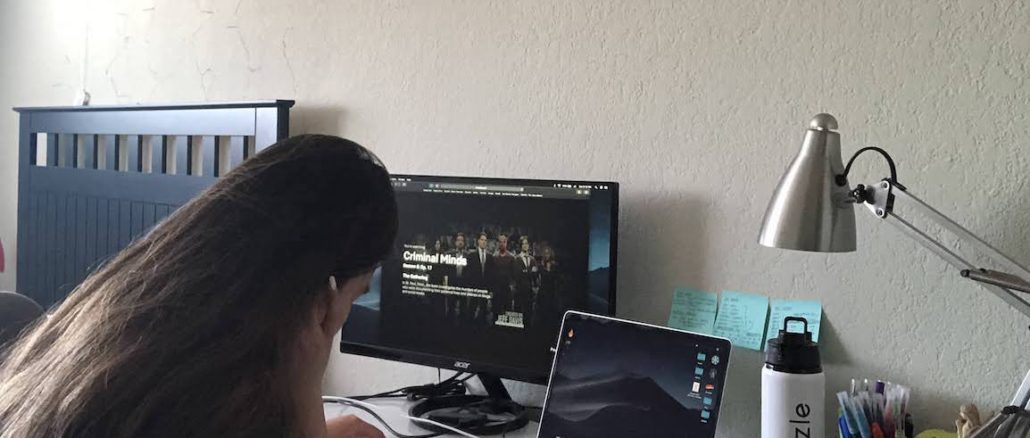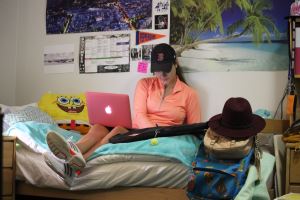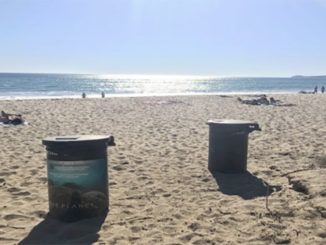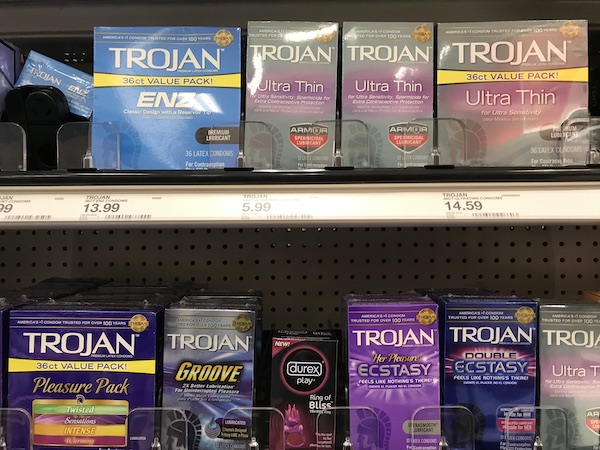
The COVID-19 pandemic has led to Pepperdine students asking many questions:
- When are students going to be able to live on campus again?
- Which vaccine should I get?
- Did Carol Baskin actually kill her husband?
With the pandemic forcing increased time indoors, Pepperdine students’ binge-watching habits have risen as a way to cope with the trauma and as a way to find connections with others in a safe way. Through social media, certain television specials and movies sparked intense interest among students, spiking in popularity then sharply declining.
“There’s almost something viral about the TV watching right now,” Screen Arts Professor David Madden said. “They have a very quick shelf life and they burn out very quickly.”
With the rise of streaming platforms like HBO Max, Peacock and Disney+, there is a possibility that a new cultural phenomenon is among Pepperdine students — one that has begun to shape how students consume television and communicate with each other.
Binge watching may be a positive aspect of the pandemic
It is no surprise that binge watching has been on the rise since the beginning of the pandemic. With increased free time, Pepperdine students were desperate for an outlet.
Streaming numbers and streaming platforms have been on the rise for the last decade. Netflix reported a 162-million-user increase from 2012 to 2020, Jolanta Starosta and Bernadetta Izydorczyk wrote in a public health research article.
Disaster movies saw a 143% increase in sales, sports movies saw a 339% increase and horror saw a 194% increase from April 2019 to April 2020, Travis Clark wrote in a July 2020 Business Insider article. These specific genres have created a sense of escapism that is a stark contrast to reality.
In a Pepp Post survey of 50 respondents, 68% said their streaming has increased since the pandemic started.
Almost 48% of students said they spent two to three hours per day on streaming platforms. An additional 20% said they spend three or more hours on streaming platforms per day.
Madden said these increased habits are likely a short-term coping mechanism.
“If these habits are caused by trauma and stress, then they won’t stay long term,” Madden said.
For Connie Nong, a sophomore business administration major, binge-watching old favorites has helped her with stressful times.
“It’s almost like an anxiety thing,” Nong said. “I’m scared if I watch a new show I won’t like it or I’ll end up liking it so much that I’m going to waste all my time on it.”
Over 64% of students surveyed said they have rewatched shows at least once, while an additional 20% said they have watched the same show at least three separate times.
“I watch shows that I’m already comfortable with and that I know that I like,” Nong said. “Because I’ve seen it already, I can stop when I want to.”
Nong likes watching shows while studying or doing homework to put her at ease and provide background noise.
The world wide web of connection
While students may be all across the country and world, they have discovered group-watching options in certain streaming platforms and third-party applications to connect.
“I use Teleparty,” sophomore economic major Adam Schmidt said. “It helps with synchronized viewing and has a chat feature so I can talk with my friends while watching something with them.”
Teleparty, formally known as Netflix party, is a Google Chrome extension that allows viewers to watch synchronized shows and movies on Netflix, Hulu, HBO or Disney+, while chatting with one another in real time. Almost 55% of students surveyed said they have used the extension.
Like Schmidt, sophomore history major Lisette Isiordia has used Teleparty to connect with friends while watching her favorite movies and shows.
“Even with the pandemic, we were able to chat along and pause it or rewind if certain things stuck out at us,” Isiordia said. “I can still feel like I have a connection with people even though we are physically separated.”
Connection between friends isn’t the only connection students are feeling. Certain shows have hit a viral status in the past year, enticing a huge audience to watch said show as a collective and then discuss on social media.
“It becomes an instant media phenomenon,” Madden said. “There seems like there’s some sort of collectivity where large numbers of people are wanting to participate in one or two particular shows at a time to create some sort of collective participation.”
Nong and Isiordia said they also talk about popular shows over social media.
“I will scroll on the hashtag on Instagram and see what people are saying about the [most recent] episode,” Isiordia said.
Nong interacts on social media as well.
“I have private messages with friends that if we see a meme that reminds us of the movie or show, we will send it to each other,” Nong said.
What students are watching
Students said they are much more eager to watch shows on Netflix than through traditional television. It has become more of a way of life than a pastime.
“We have this very vibrant life that is connected to culture and movie going and TV watching in a sense that it is there for us,” Madden said. “That has provided a real sense of connection and artistic and creative vibrancy in an otherwise very challenging time for people.”
In the poll, 92% of students use Netflix, and 68% use Disney+ and Hulu, respectively. Some of the biggest shows on these platforms went viral, especially among Pepperdine students.
Over 53% of students said they watched “Wandavision,” a Disney+ series about two Marvel superheroes seemingly living a suburban life. Another 51% of students watched “Outer Banks,” a modern take on a treasure hunt among four friends. Almost 47% also said they watched “Tiger King,” a Netflix docuseries about an eccentric Oklahoma zoo owner’s downfall in the world of big cat breeding.
Jaime Le, a senior engineering major, has specific tastes when it comes to the shows he watches.
“It has to be entertaining,” Le said. “I like to see character development and actual conflict.”
Le enjoys the “Star Wars” franchise, loving both the movies and television series for these reasons.
Schmidt found some shows like “Queen’s Gambit” appealing for the same reasons Le enjoys “Star Wars.”
“It has a very strong storyline with a lot of character development and complex characters,” Schmidt said.
Isiordia enjoys cooking and baking shows like “Master Chef.” She also finds major appeal to trailers to television shows and the banners shown on streaming platforms.
Lights, camera, working from home
With the pandemic, most people have had to conduct schooling and work from home. This has made it very difficult for those in the film industry to create new and exciting content.
“(The pandemic) has also affected the world of television production. Now we have to situate our stories in relation to the pandemic,” Madden said. “You’ll have to integrate it in some sort of way creatively.”
Shows like “Grey’s Anatomy,” “This is Us” and “911” have added storylines that fit the pandemic.
Luckily, for some film production companies, the pandemic has almost been a blessing in disguise.
“Binge watching has fully normalized all of the streaming platforms in a much more broad sense,” Madden said. “This has solidified the presence in the cultural production sphere, and this will continue quite strongly beyond the pandemic in this foothold they now have.”
Kendall Brown completed the reporting for this story under the supervision of Dr. Christina Littlefield and Dr. Theresa de los Santos in Jour 241 in Spring 2021. Dr. Littlefield supervised the web story.



